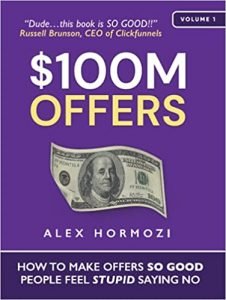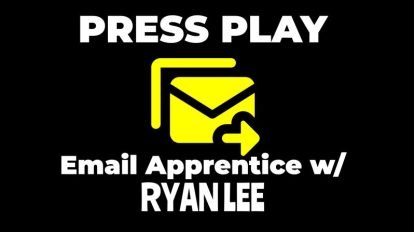Winning in Options with Elliott Wave: Build Skill, Timing, and Confidence
Winning in Options with Elliott Wave shows a clear way forward. Todd Gordon guides you from core concepts to live trades. Options offer high liquidity and low capital needs. They can also magnify moves better than cash markets. Therefore, the right structure and timing can create powerful outcomes.
Why Options and Why Elliott Wave
Options deliver leverage with defined risk when used well. You can target direction with smart capital efficiency. However, you must time entries and exits with precision. Winning in Options with Elliott Wave tackles both needs directly. The wave model helps forecast direction and likely timing windows. Consequently, your trades can align with structure, not hope.
Proof From the Playbook of Champions
History highlights the method’s potential. In 1984, Bob Prechter won the U.S. Trading Championship. He posted a then‑record 444% return in a monitored account. His chosen vehicle was options, guided by Elliott waves. The principle remains the same today. Direction and timing still decide outcomes.
Todd Gordon’s Approach and Course Promise
Todd Gordon brings a practical, transparent teaching style. He offers a solid foundation you can apply immediately. You learn options basics and advanced concepts step by step. Moreover, you gain tools to support long‑term success. Winning in Options with Elliott Wave keeps focus on action.
From Basics to Advanced: What the Lessons Cover
The training moves cleanly from fundamentals to nuance. You first master options mechanics and core strategy logic. Then you study implied volatility and vertical spreads. After that, you connect each piece to wave structure. Therefore, you see how options and waves fit together tightly.
Live, Recorded Trades Bring Concepts to Life
Theory sticks best when paired with execution. Four lessons apply the method to real‑time markets. Todd walks through SPX examples in live, recorded trades. You see setup, confirmation, and management in context. Consequently, you can model your process with greater clarity.
The Strategy Fit: Pick the Right Tool for the Wave
Winning in Options with Elliott Wave teaches a simple rule. Strategy selection should match the wave position. When a trend wave is likely, you can choose directional spreads. When consolidation appears, use structures that sell time. This alignment improves odds and risk control.
Entry, Targets, and Exits Made Simple
Great analysis needs actionable levels. You learn where to enter with confidence. You also define targets using wave and Fibonacci logic. Then you choose exits that respect structure and risk. As a result, your plans feel clear before you click.
Focus on Risk/Reward and Position Design
Options reward patients who plan carefully. The course shows how to design favorable risk/reward. You fine tune strike and expiration to fit the setup. You also watch how volatility impacts pricing and edges. Therefore, your positions support the thesis, not fight it.
Rules, Guidelines, and Fibonacci Integration
Wave analysis provides rules and guidelines for clarity. You learn how to validate or invalidate a count. You also apply Fibonacci ratios to measure probable moves. These tools refine timing and profit targets with precision. Consequently, your trades rely on objective structure.
Managing the Position: Adjust or Exit
Management separates good ideas from strong results. The lessons show when to exit one side of a spread. They also outline when to close the entire position. You learn how to size adjustments with discipline. Therefore, your edge stays intact through changing conditions.
What You Will Learn, Point by Point
- The optimal options strategy to use and why
- Which wave position best fits each strategy
- Which strategies suit larger or smaller time frames
- How to apply Elliott’s rules and guidelines with Fibonacci ratios
- How to anticipate key market situations and the wave patterns that follow
- Where to set entry, target, and exit levels with confidence
- How to build the best risk/reward for each thesis
- How to fine tune strike prices and expiration dates
- Which waves should precede your entry point and why
- When to exit the whole position versus just one side
A Practical Workflow You Can Repeat
A repeatable workflow converts insight into outcomes. First, map the higher‑timeframe wave structure. Next, identify the active wave and likely next phase. Then, choose the options strategy that fits that phase. After that, place strikes and expiry based on range and time. Finally, manage the position with preplanned triggers. This cycle reduces hesitation and anchors discipline.
Who Will Benefit Most Right Now
Swing traders will appreciate the timing clarity. Options traders will sharpen strategy selection and exits. Newer traders will gain structure that reduces noise. Experienced traders will add a robust forecasting lens. If you value process, this course fits your style.
Why the Method Works Across Markets
Markets move in waves that reflect crowd behavior. Options let you express those insights efficiently. When structure and strategy align, risk can stay defined. Moreover, timing windows shrink randomness in entries. Therefore, the approach travels well across symbols and seasons.
Final Thoughts and Next Steps
Winning in Options with Elliott Wave blends timing and structure. Todd Gordon teaches from basics to advanced execution. You learn strategy fit, entries, risk, and live application. Consequently, you trade with more confidence and fewer blind spots.
For a deeper dive into tactical day setups, consider BobaTrader – Full Options Daytrading Guide.
Sales Page
Download Link for VIP Membership Users:
Download link is available for Lifetime VIP Membership members only. |
|---|














![[Step By Step Guide] ✅ THE ART OF FACEBOOK GROUPS ★★★★★ – How To Grow Brand New Facebook Group From Zero To Hero ▶️](https://wsodownloadhub.com/wp-content/uploads/2024/05/Step-By-Step-Guide-THE-ART-OF-FACEBOOK-GROUPS-How-To-Grow-Brand-New-Facebook-Group-From-Zero-To-Hero.png)

